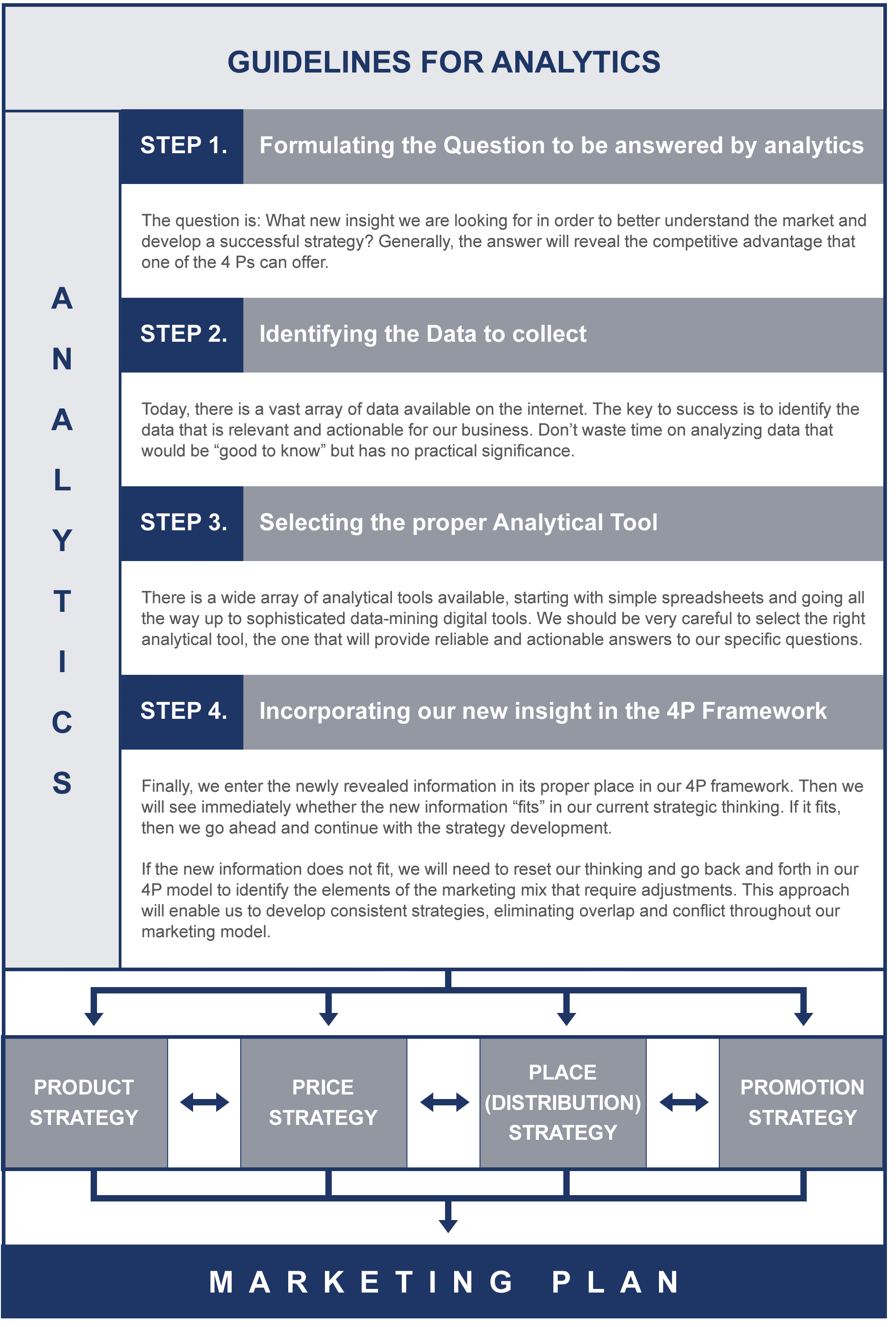Importance of the 4P-Concept in the age of Analytics
Today, we often hear that the 4P-concept is “an old-fashioned approach”, that it is “out of date”. How could they be when they are the core elements of the marketing mix which do not change with time? What changes is how broadly or narrowly we define each P and consequently, how we collect and analyze the data relevant to each P in order to arrive at the right strategy.
A successful practitioner will always develop a well harmonized strategy for each P first, and then compiles them into a marketing plan. The key to success is how the 4Ps are mixed. Are the 4 Ps in harmony? Do they support one another? Many product failures are the result of contradictory strategies within the 4Ps. This often happens in business because the strategies for each P are developed by different marketing teams. Note the common separation of the development of the product strategy (in house) and communication strategy (outside agency).
Simply stated, the marketing strategy will always consist of the definition of a product we want to sell to a target segment, at a certain price, in a certain place, and with a well-defined communication package. Whether we win or lose will depend on (a) how we define and mix the four Ps, and (b) how we develop a consistent and harmonized strategy for each one of them resulting in a proper synergy.
How does analytics interact with the 4Ps?
Historically, many of the marketing successes were based on intuition. Next, sophisticated market research techniques were developed to provide an understanding of the market place. Today, the internet offers marketers a vast amount of data which they can analyze with a variety of digital analytical tools in order to make better data-based decisions. This is the vital role of analytics and of the data-driven marketing approach.
Analytics is positioned between data and marketing insight. It uses spreadsheets, statistical modeling, computer modeling and mathematical methods to find useful pattern formations which may provide companies with a new understanding of their business. Based on the finding, marketers can be more creative in defining the badly needed competitive advantage, be it in the consumer need, the target segment, communication or in any other aspect of the marketing mix.
The task of analytics is thus to make sense of Big Data. Its modules focus primarily on analyzing the new information available from different sources on the internet.
Businesses have three key marketing questions: (1) What information (data) do they need to gain a comprehensive understanding of the marketplace? (2) How to analyze the data so that they get practical, actionable information? (3) How to build a winning strategy based on the newly acquired knowledge?
Analytics provides the tools for answering only question #2, but it is the 4P-framework that defines #1 and #3. It is the 4P-framework that formulates the questions which need to be answered by the analytical models. Many times, data is being collected and analyzed but leaves unanswered the question of what to do with the new information.
Just as market research data had to be channeled to fit in a 4P-structure in order to provide actionable insights, analytics also needs to use this goal-oriented framework as its guideline.
In summary, analytics is all about supporting the decision-making process by providing relevant facts that in turn provide new insight and allow you to make better decisions. It is a more sophisticated form of market research.
The 4P-framework provides guidelines for properly steering the data collection and the analytical processes toward a successful strategy-making environment while eliminating overlap and conflict within the marketing mix.
Successful marketing requires the two to work together hand in hand in support of one another.


